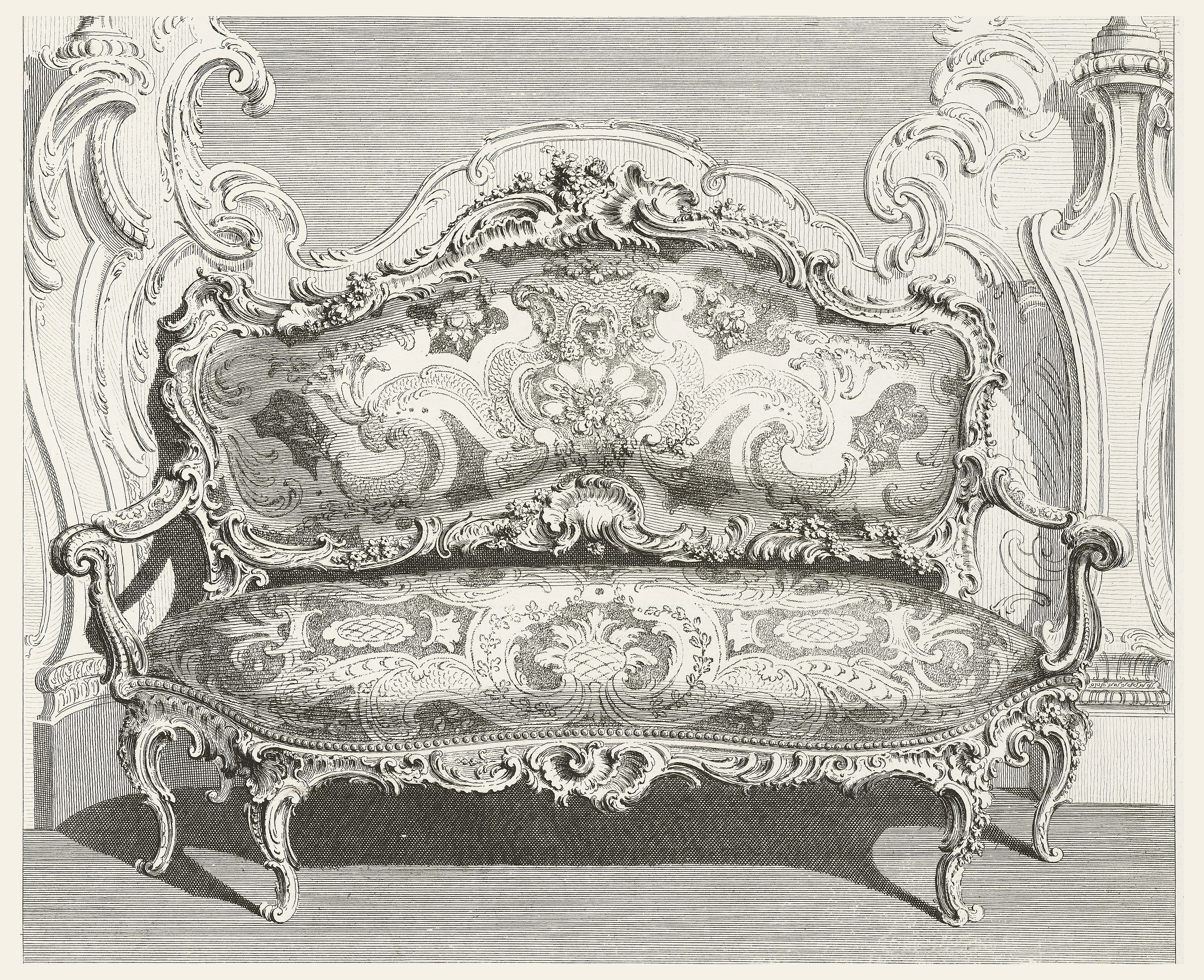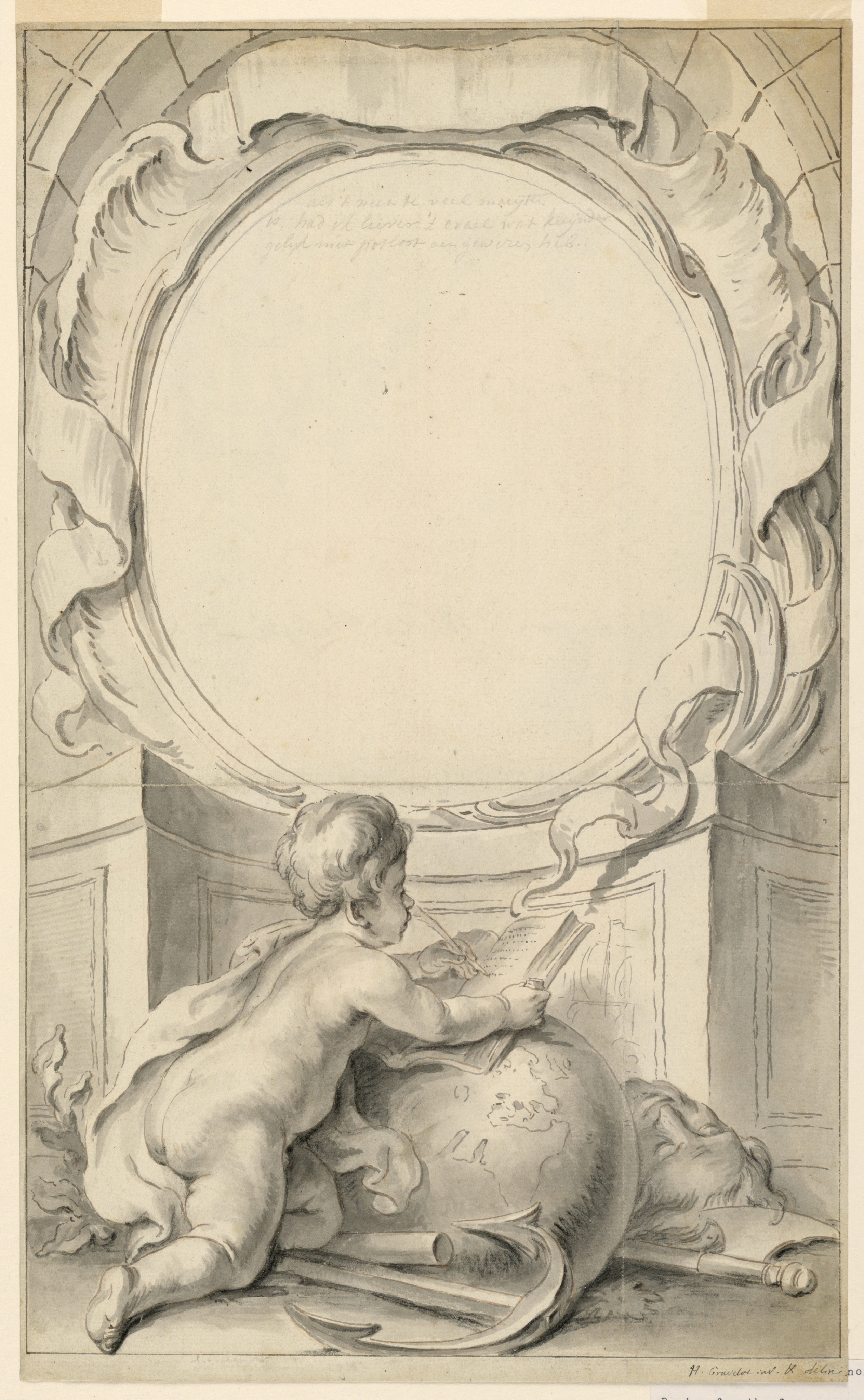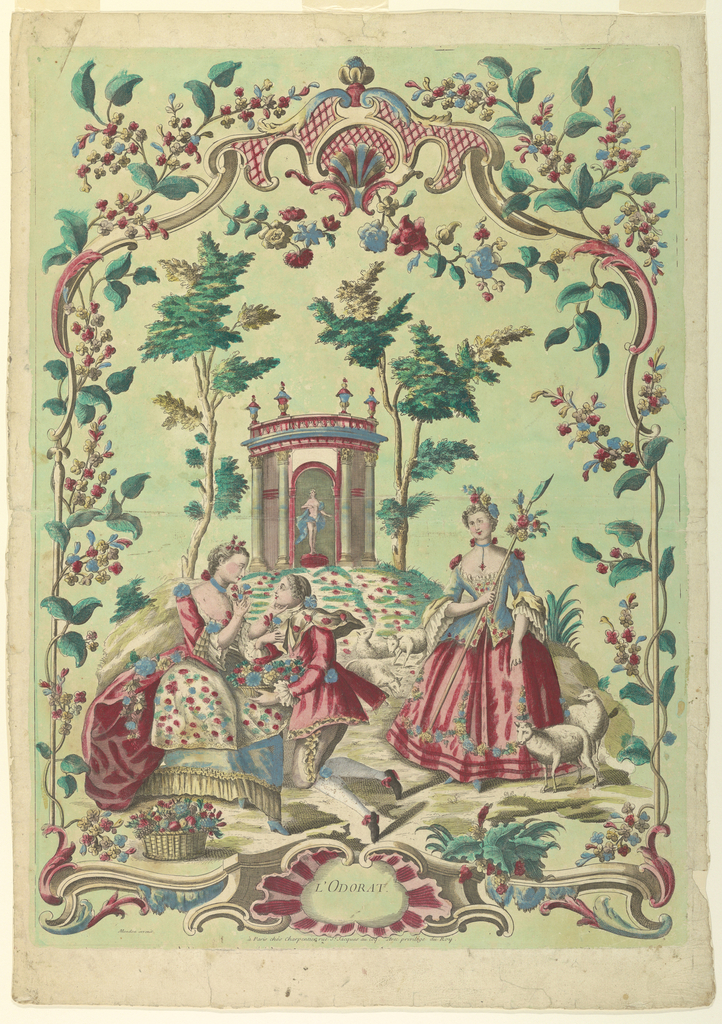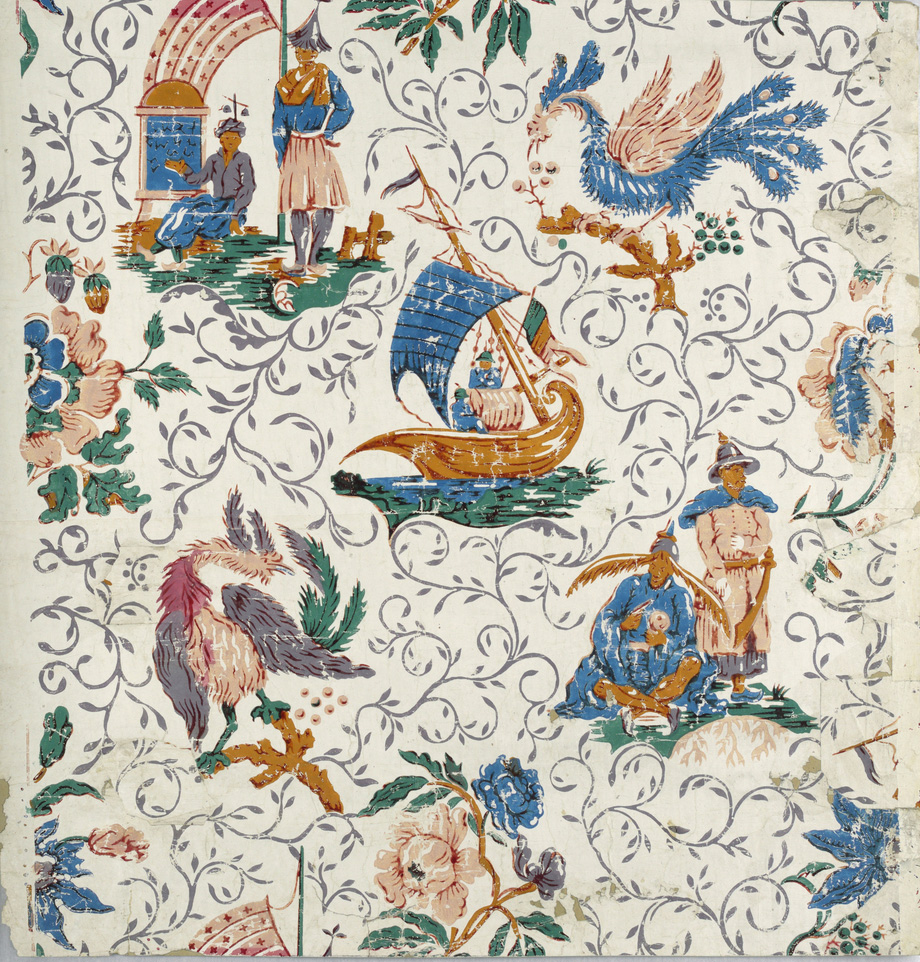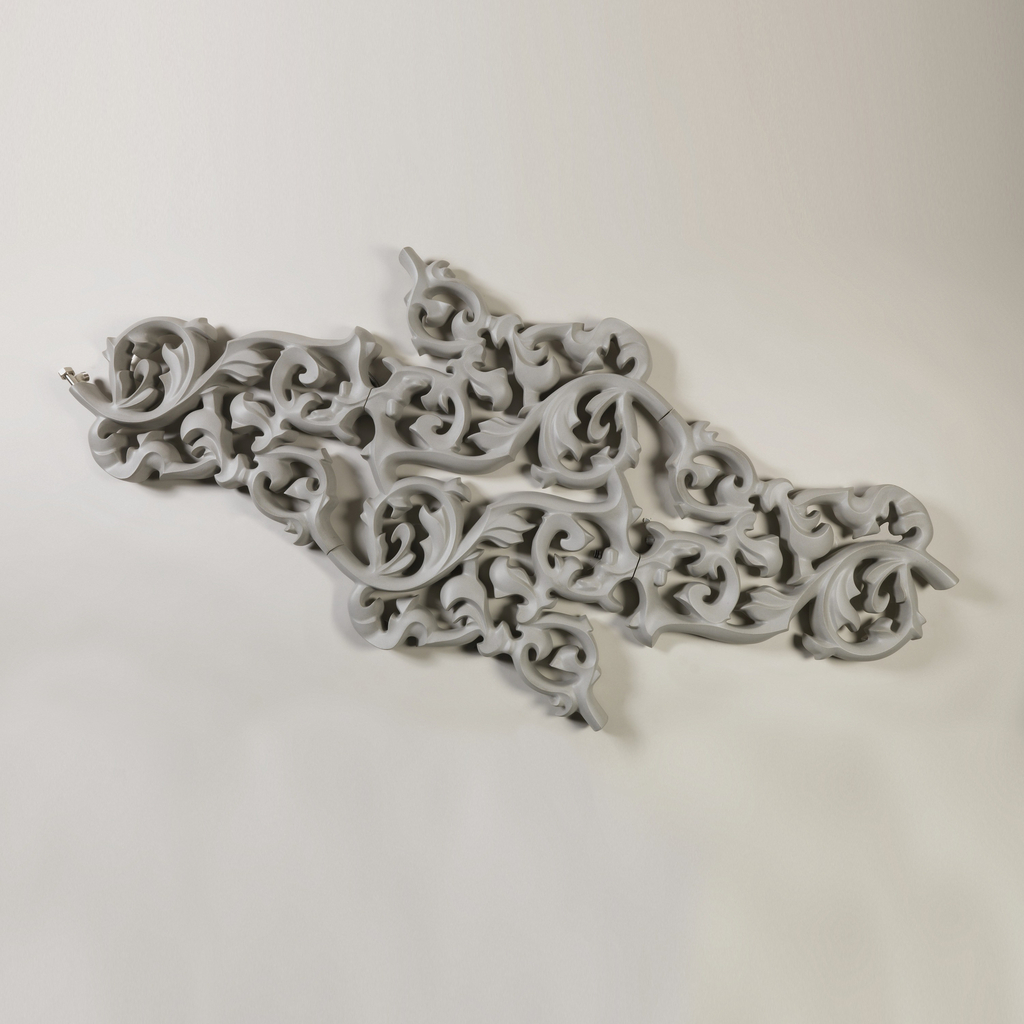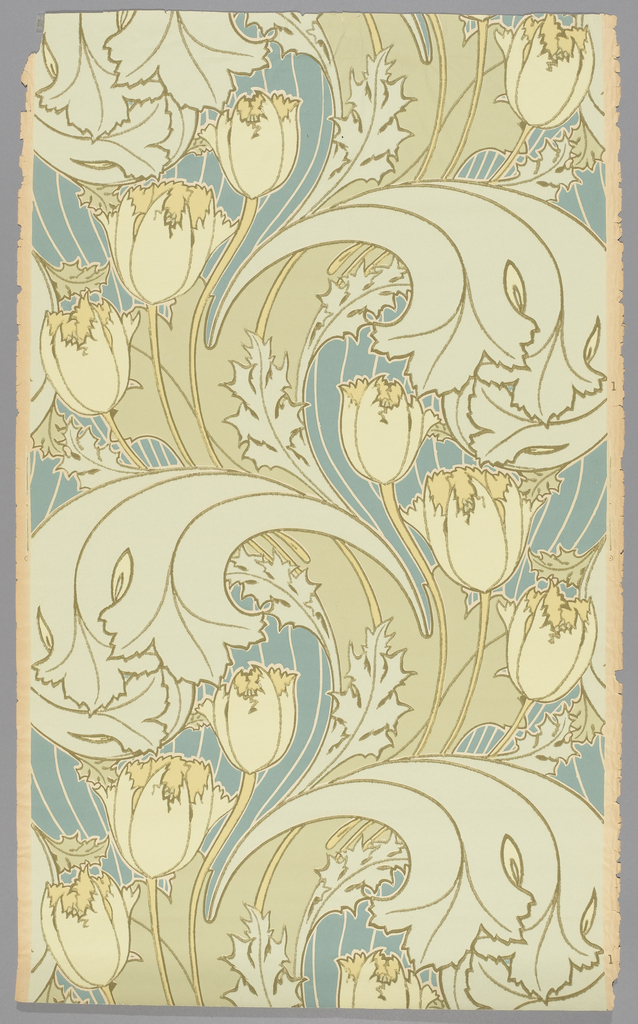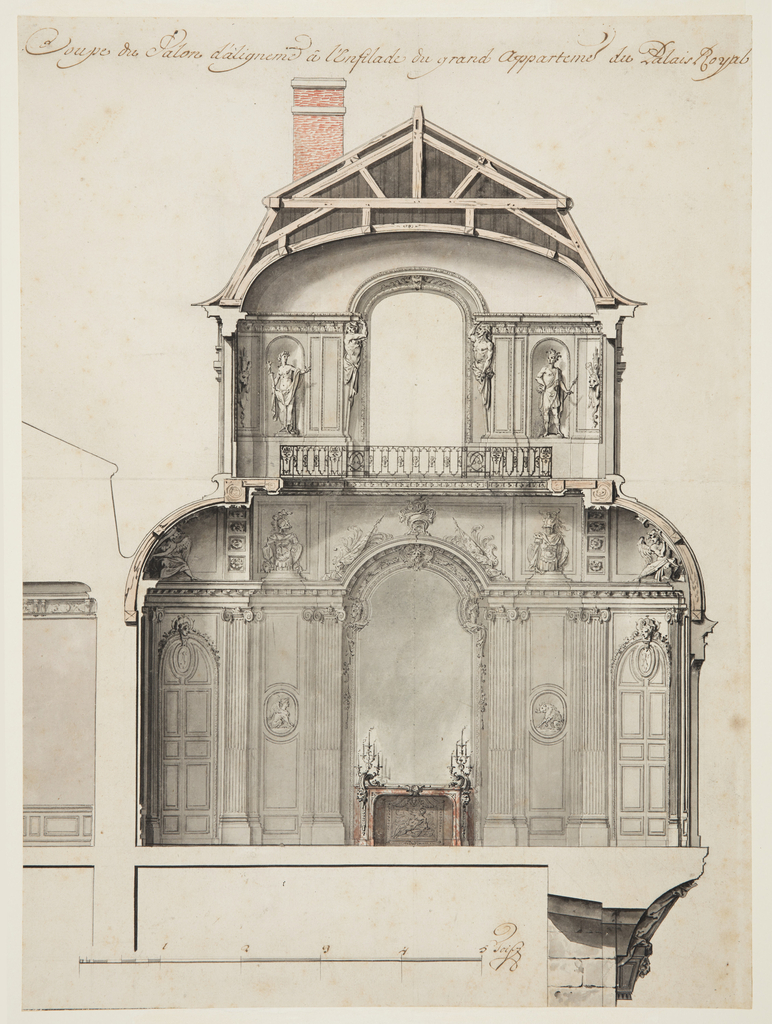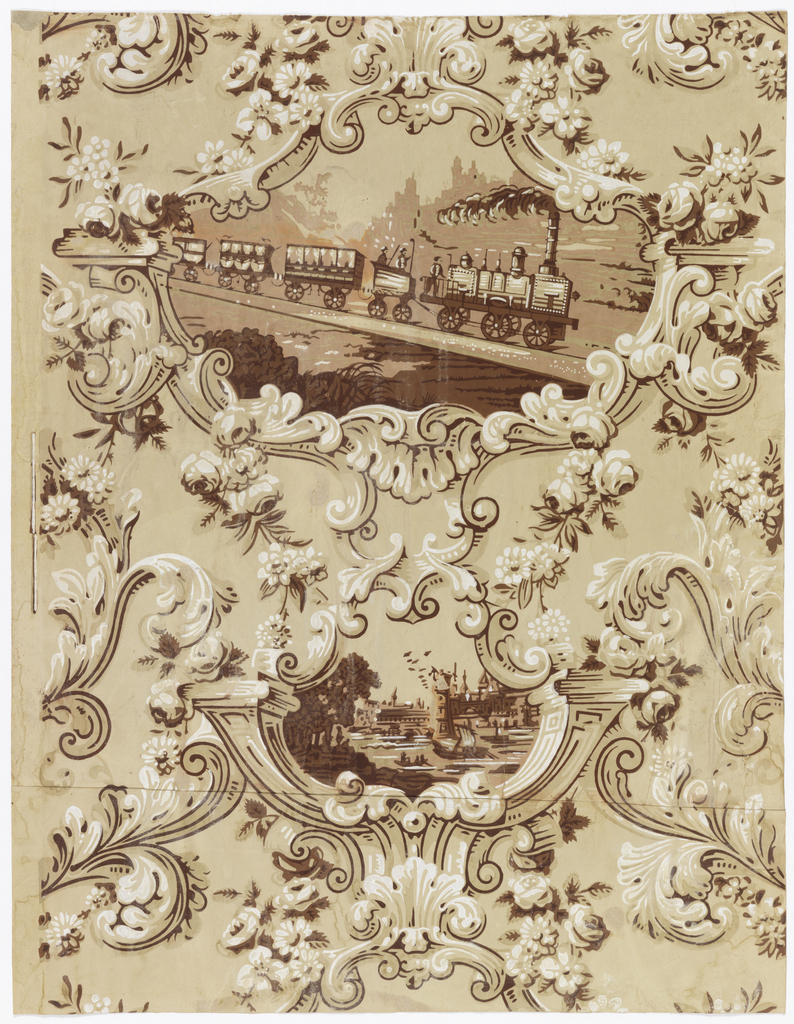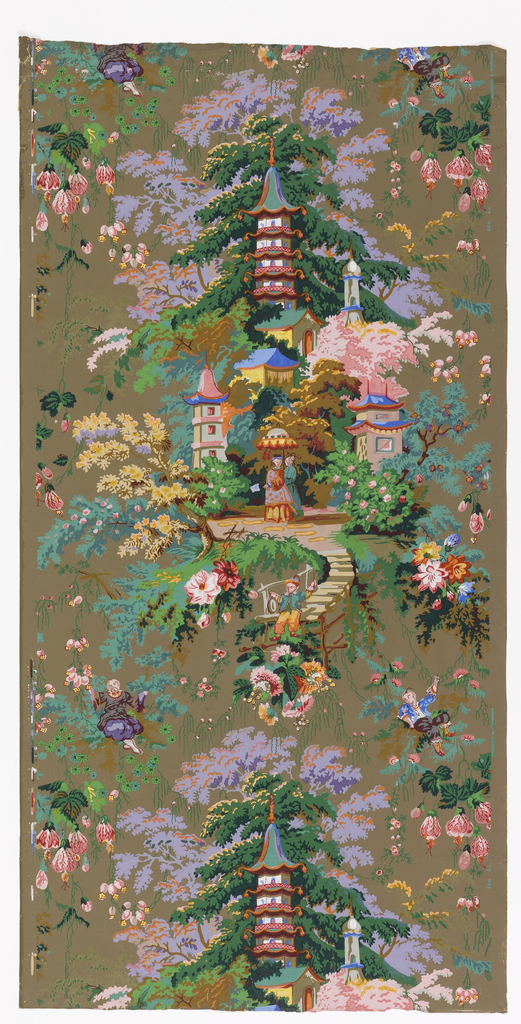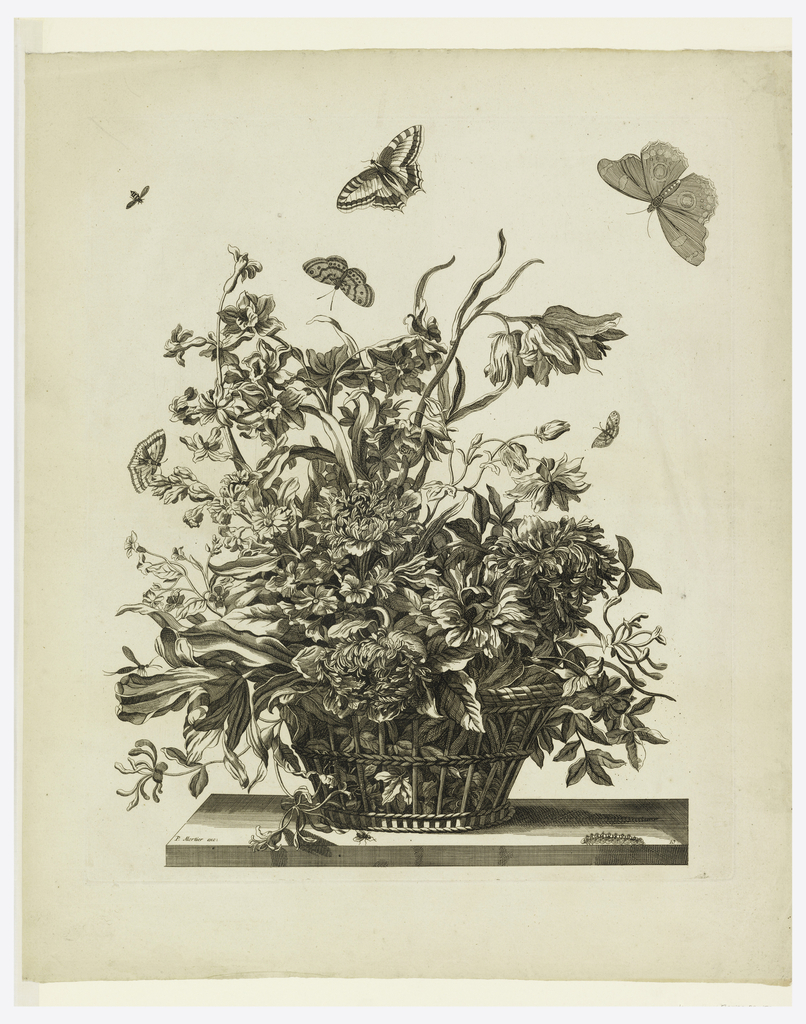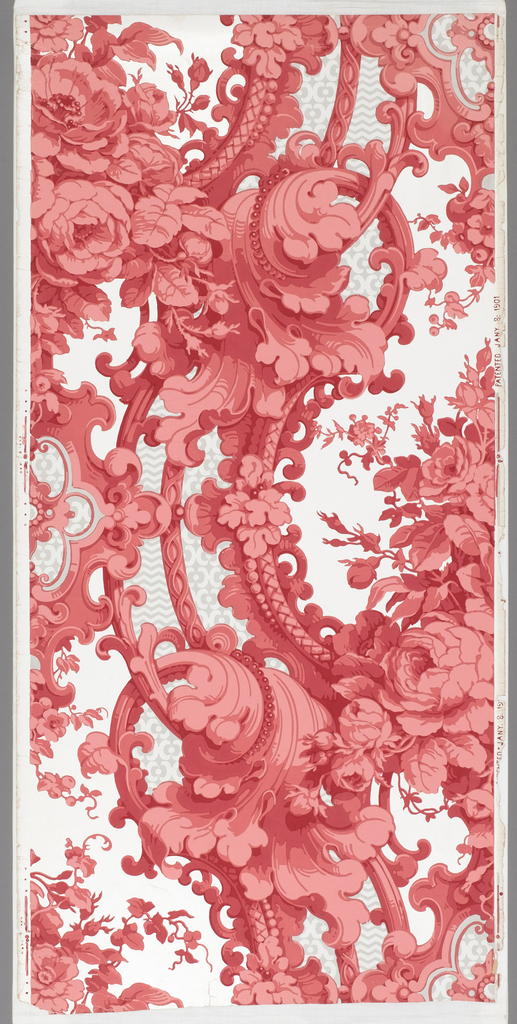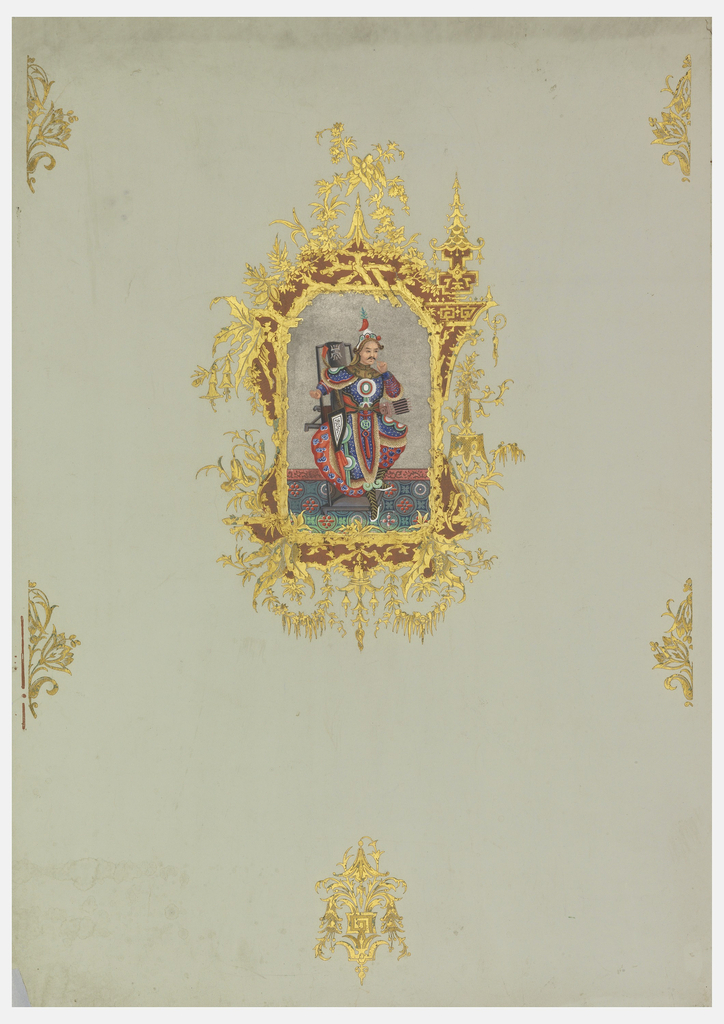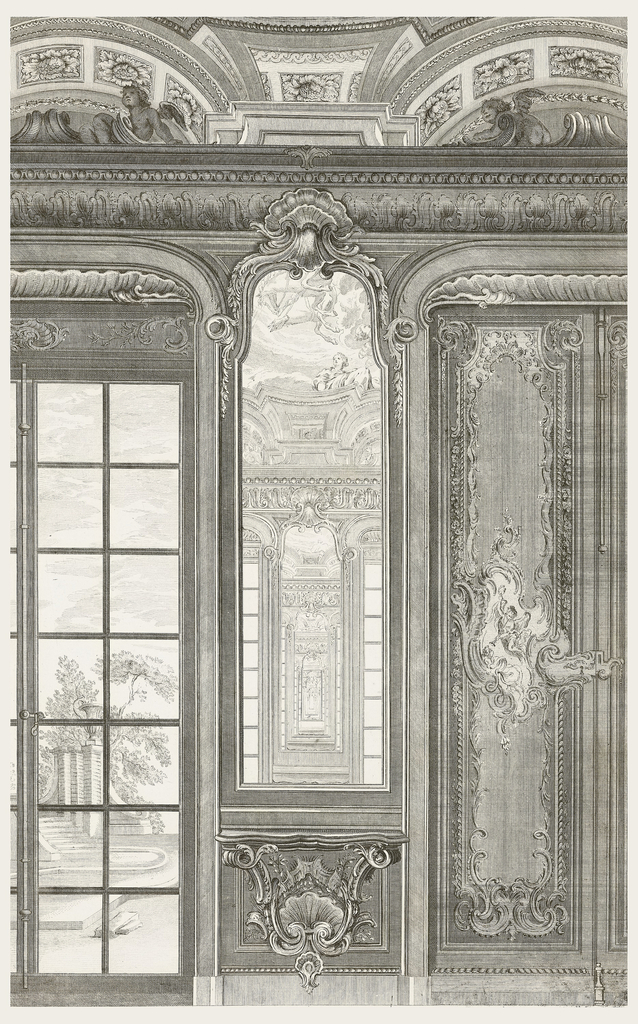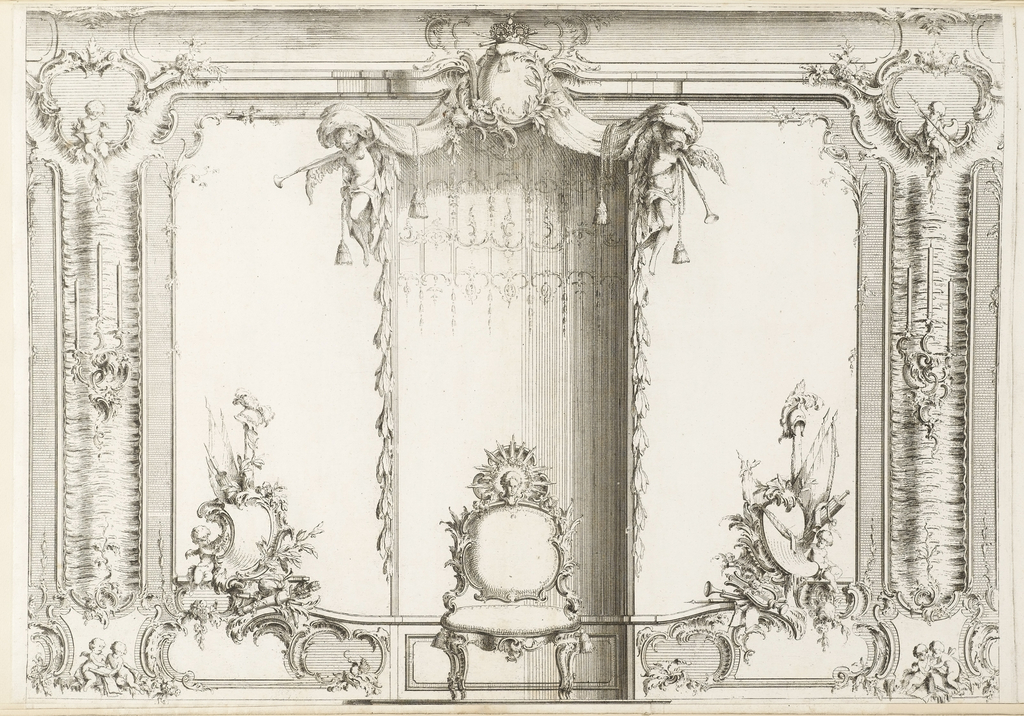Small Sofa for Count Bielenski, Grand Marshal of Poland is a print on white laid paper, etched and engraved by Gabriel Huquier (French, 1695-1772). It features a sofa or canapé designed in the Rococo style, framed by an interior wall decorated with carvings that mirror the graceful curvatures of the sofa’s structure. The goldsmith, sculptor,...
In the mid-eighteenth century, the British historian Thomas Birch (1705 – 1766) published a series of short biographies of famous figures from his nation’s past. Accompanying each of the 108 biographies was an engraved portrait of the subject, whose likeness was presented within an elaborate decorative setting.[1] These ornamental frames were designed by Hubert-François Bourguignon...
In celebration of our new exhibition The Senses: Design Beyond Vision, this Object of the Day post explores the multisensory experience of an object in Cooper Hewitt’s permanent collection. This bright, hand-colored print dated to about 1750 and signed by François-Thomas Mondon depicts a group of figures in a landscape composed of trees, flowers, and...
Though enigmatic, the iconography of this wallpaper—with its flowers blooming in full, Chinese phoenixes, and scenes of men from the East—expresses the Rococo and chinoiserie styles of the late Georgian and early Victorian periods in England. These styles actually have their origin in the seventeenth and eighteenth centuries, but throughout the 1800s, revival styles proliferated...
A version of the Heatwave Radiator is included in the exhibition Joris Laarman Lab: Design in the Digital Age, on view at Cooper Hewitt, Smithsonian Design Museum through January 15, 2018. Radiators have long been used to exchange heat, transfering thermal energy from one medium to another for the purpose of space heating. Their primary...
Stylized tulips and acanthus leaves flow skywards through this sidewall from the early eighteen nineties as though they are caught in a fast running stream. Their dynamic movement captures the eye and draws it along the sinuous curves of lithe stems and broad fronds that weave their way across the paper. Such a design is...
The Palais Royal lies just on the other side of the rue de Rivoli in Paris, well within eyesight of the Louvre. Among other things, this former royal palace is now the seat of the Council of State (Conseil d’État) and the French Ministry of Culture (Ministère de la Culture). Despite its regal name, it was...
Innovations in transportation and mobility were to become a common theme in wallpaper design. Similar images frequently appeared on bandboxes and hat boxes starting in the 1830’s. A sign of mobility themselves, these boxes were used for the safe transport and storage of men’s removable collars and hats. Early designs include historic hot air balloon...
This beautiful sidewall is a great example of the Rococo Revival style at its most wild and vivid. Its design, a repeating landscape vignette floating in space bordered by sprays of flowers, is common in 18th century wallpapers. This paper also uses the old-fashioned technique of block-printing, despite coming from a time when machine-printing dominated...
Jean-Baptiste Monnoyer (French, 1626-1699 ), a painter, designer and engraver, created many prints like this work, Plate 10 from Set of Flowers in a Basket which is dated to 1680. Early flower prints were primarily used for botanical textbooks, but by the end of the seventeenth century, they were considered a higher artistic medium. Prints like...
I have always loved these Rococo-style wallpaper designs with their large scale boldness, trompe l’oeil effects, and attention to detail. This paper is rather late in date for a Rococo wallpaper but it was a new design in 1901 as noted by the “Patented January 8, 1901” printed in the selvedge. The Rococo style was...
Wallpaper, like all design, can be a powerful tool for communicating a specific message. Take for example wallpapers printed during the French Revolution that portrayed ribbons of red, white and blue in support of the uprising. On this object, however, a message has been spelled-out right on top of the design, the pattern becoming a...
This elaborate Rococo-revival wallpaper incorporates several different techniques. The print is an applied lithograph, the salmon-color framework is woodblock printed, and the gold is a stamped metal foil. The application of the stamped foil embosses the paper as the foil is being applied, creating a much richer and more reflective surface than a printed gold...
Mirrors were still a relatively expensive item during the eighteenth century, but they continued to grow in fashion as technical developments made it possible for larger and larger panes to be produced. They appealed to patrons for their ability to reproduce light in darks rooms and served more vain purposes as a signifier of one’s...
The appartements in eighteenth-century interiors were organized hierarchically to differentiate between ceremonial, social, and private spaces. This hierarchy was reinforced through increasingly elaborate decoration as the designation for spaces grew more public. With this in mind, the decoration adorning the paneling, or boiserie, would have made guests aware of the types of social interactions which...
